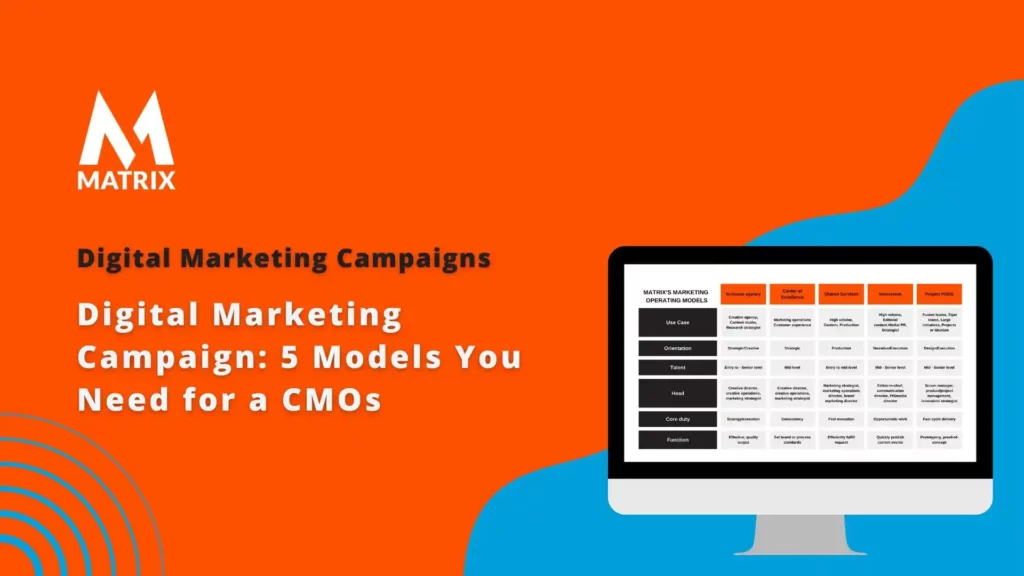The Four Pillars Of Trustworthy Content For B2B Tech Marketing
The Four Pillars Of Trustworthy Content For B2B Tech Marketing
In today’s fast-paced world of B2B tech marketing, building trust with your audience is paramount. With vast information readily available to potential customers, it can be challenging to stand out from the crowd and establish your brand as a reliable and trustworthy source.
That’s why crafting content that captures attention and instills confidence is crucial. You must focus on The Four Pillars Of Trustworthy Content to achieve this.
These pillars are the foundation for creating engaging and authentic materials that resonate with your target audience.
What is pillar content?
As a marketing researcher, I can tell you that pillar content is designed to be comprehensive and authoritative on a particular topic. It is often long-form and covers all aspects of the topic in detail. Pillar content is typically used to attract and educate potential customers and to establish yourself as an expert in your field.
Pillar content can take many different forms, including:
- Blog posts
- eBooks
- White papers
- Case studies
- Webinars
- Online courses
- Infographics
- Videos
Pillar content is important for several reasons. First, it helps to improve your website’s search engine ranking. When you have high-quality pillar content on your site, Google is more likely to see your website as an authority on the topic and rank it higher in search results.

Second, pillar content can help to attract more visitors to your website. When people search for information on a particular topic, they are likelier to click on a link to a pillar page that covers that topic in depth.
Third, pillar content can help to convert visitors into customers. People with access to high-quality pillar content are more likely to trust your brand and be willing to do business with you.
To create effective pillar content, you need to choose a topic that is relevant to your business and that your target audience is interested in. You also need to ensure your content is well-written, informative, and engaging.
Here are some tips for creating pillar content:
- Choose a topic that is broad enough to cover all aspects of the subject but narrow enough to be specific.
- Do your research to make sure that your content is accurate and up-to-date.
- Write in a clear and concise style. Content Marketing Financial Firms
- Use images, videos, and other multimedia elements to make your content more engaging.
- Promote your pillar content on social media and other online channels.
Pillar content is an essential part of any effective content marketing strategy. By creating and promoting high-quality pillar content, you can attract more visitors to your website, educate potential customers, and establish yourself as an expert in your field.
What is cluster content?

Cluster content, or the pillar-and-cluster model, is a marketing strategy that organizes content around a central topic or theme. The goal of cluster content is to create a comprehensive and informative resource on a given topic while also improving SEO and user experience.
A cluster content strategy typically includes two main components:
- Pillar pages are in-depth, authoritative content covering a cluster’s central topic. They are typically longer-form content, such as blog posts, articles, or white papers.
- Cluster content: Cluster content is a collection of shorter, more focused content that support the pillar page. Cluster content can include blog posts, articles, infographics, videos, and other types of content. The Complete Guide to Content Marketing for Midmarket Companies
Cluster content is linked together using internal links. This helps search engines understand the relationship between the different pieces of content and makes it easier for users to navigate and find the information they seek.
Cluster content has several benefits, including:
- Improved SEO: Cluster content can help to improve SEO by signaling to search engines that your website is an authoritative resource on a given topic. This can lead to higher rankings in search results pages (SERPs).
- Better user experience: Cluster content makes it easy for users to find the information they are looking for by organizing it around a central topic. It also encourages users to explore your website and learn more about your business.
- More efficient content creation: Cluster content can help you to create more efficient content by giving you a clear focus for your writing. You can reuse content across cluster content pieces, saving time and effort.
First, identify the core topics you want to cover to create a cluster content strategy. Once you have identified your core topics, you can start to create pillar pages and cluster content for each topic.
Here are some tips for creating cluster content:
- Make sure your pillar pages are comprehensive and informative. Pillar pages should cover the central topic of a cluster in depth. They should also be well-written and engaging.
- Create cluster content that is relevant to your target audience. Your cluster content should be tailored to the needs and interests of your target audience.
- Use internal links to connect your pillar pages and cluster content. Internal linking helps search engines understand the relationship between the different pieces of content and makes it easier for users to navigate your website.
- Promote your cluster content through social media and other channels. Once you have published your cluster content, promote it through social media and other channels. This will help you to reach a wider audience and drive traffic to your website.
Cluster content is a powerful marketing strategy that can help you improve SEO, user experience, and content creation efficiency. Following the tips above, you can create a cluster content strategy to help you achieve your marketing goals.

How do I create pillar content?
How to Create Pillar Content for a Tech Firm
Pillar content is the foundation of any effective content marketing strategy. The long-form, in-depth content covers a core topic in your industry. Pillar content is typically evergreen, meaning it remains relevant and useful for a long time.
To create pillar content for your tech firm, you should first understand your audience and their needs. What are their pain points? What are they trying to learn? Once you understand your audience well, you can start brainstorming pillar topics.
Here are some tips for creating pillar content for a tech firm:
- Start with broad topics. Pillar topics should be broad enough to encompass a wide range of subtopics. For example, a pillar topic for a SaaS company might be “Customer Relationship Management (CRM).”
- Identify your audience’s pain points. What are the biggest challenges your audience faces? What questions do they have? Your pillar content should address these pain points and questions. What is content marketing, and why is it important?
- Research your keywords. What keywords are your audience searching for? Use keyword research tools to identify relevant keywords that you can target in your pillar content.
- Create comprehensive content. Pillar content should be in-depth and informative. It should cover all aspects of the topic, from the basics to more advanced concepts.
- Use multimedia. Pillar content can be in various formats, including blog posts, articles, videos, infographics, and ebooks. Consider using multimedia to make your pillar content more engaging and visually appealing.
Once you have created your pillar content, you need to promote it and ensure it gets seen by your target audience. Share your pillar content on social media, your email newsletter, and other relevant websites. You can also promote your pillar content through paid advertising and public relations.
Here are some examples of pillar content topics for tech firms:
- Software development:
- Agile development
- DevOps
- Cloud computing
- Web development
- Mobile development
- Information technology (IT):
- Marketing:
- Sales:
- Lead generation
- Sales prospecting
- Customer relationship management (CRM)
- Sales closing
- Sales enablement
- Content Translation Services: A Competitive Advantage for Your Business
By creating comprehensive and informative pillar content, you can establish yourself as an authority in your industry and attract new customers and partners.

Better Search Ranking
Better Search Ranking in 90 days
SEO is extremely important for companies to rank on search because it is the primary way that people find information online.
How do I use pillar and cluster content to boost my search rankings?
Introduction to Pillar Content Pillar content, often referred to as a cornerstone piece, marks a significant leap in content marketing. It’s not just about producing content; it’s about crafting comprehensive, value-packed resources.
The Evolution of Content Marketing From Short Posts to Comprehensive Guides:
Gone are the days when short, 600-word articles dominated the blogging sphere. Today, there’s a gravitation towards longer, more in-depth pieces that provide readers with exhaustive insights.
We suggest higher value content in about 1,500 to 2,000 words, and that’s not an in-depth article.
The Shift to Value-Driven Content:
The digital landscape now prioritizes value above all. Brands and individuals seek to establish authority through meticulously researched and well-articulated content.
The trend and shift to value-driven content is one of the most important developments in marketing in recent years.
Value-driven content provides real value to your audience, such as solving a problem, answering a question, or teaching them something new. It is not about selling products or services directly but building trust and relationships with your audience by providing them with valuable information and insights.
There are several reasons why value-driven content is becoming so popular:
- Consumers are more discerning than ever before. They are bombarded with marketing messages from all sides, and they have become very adept at tuning out anything that doesn’t seem relevant or valuable to them.
- The internet has made it easier than ever for consumers to find information. They can search for what they need and find it instantly. This means that brands need to go above and beyond to provide content that is truly valuable and differentiated.
- Consumers want to do business with brands that they trust and respect. They are more likely to buy from brands that they see as experts in their field and that provide them with valuable information regularly.
There are several ways to create value-driven content, such as:
- Educating your audience. This could involve writing blog posts, creating videos, or hosting webinars that teach your audience something new about your industry or your products and services.
- Solving problems. This could involve writing articles or creating videos that help your audience solve common problems that they face.
- Answering questions. This could involve creating a FAQ page on your website, participating in online forums, or hosting live Q&A sessions.
- Providing entertainment. This could involve creating funny videos, writing engaging stories, or creating interactive content that your audience will enjoy.
No matter what type of value-driven content you create, the most important thing is to make sure that it is relevant to your audience and that it provides them with something that they truly value.
Here are some examples of value-driven content:
- A software company creates a blog post that teaches its readers how to use its software to solve a common problem.
- A marketing agency creates a video explaining the latest digital marketing trends.
- A clothing company creates a series of Instagram posts that give its followers styling tips and advice.
- A fitness studio creates a YouTube channel with workout videos and healthy eating recipes.
Value-driven content is essential for any business that wants to succeed in today’s digital marketplace. By providing your audience with valuable information and insights, you can build trust and relationships with them and ultimately convert them into customers.
Pillar Content Defined The Anatomy of Pillar Pages:
Pillar content isn’t just lengthy—it’s structured. It often encompasses various subtopics, complemented by engaging visuals and interactive elements, all under one overarching theme.
Differentiating Between Pillar Content and Regular Blog Posts:
While both offer value, pillar content is designed to be a definitive guide on a subject, often including regular in-depth posts, research, and coverage.
Differentiating Between Pillar Content and Regular Blog Posts
Differentiating Between Pillar Content and Regular Blog Posts
Pillar content is the foundation of your content marketing strategy. It is a comprehensive, authoritative guide to a specific topic or question. Pillar content is typically longer and more in-depth than regular blog posts, and it is designed to be a one-stop shop for all information related to a particular topic.
Regular blog posts are shorter, more focused pieces of content that cover specific aspects of a topic. Blog posts can promote new products or services, share news and updates, or provide thought leadership.
Here is a table that summarizes the key differences between pillar content and regular blog posts:
| Characteristic | Pillar Content | Regular Blog Posts |
| Length | Long (3,000+ words) | Short to medium (500-2,000 words) |
| Focus | Broad topic or question | It may or may not be optimized for keywords |
| Purpose | Provide a comprehensive overview of a topic | Promote new products or services, share news and updates, or provide thought leadership |
| Audience | General audience | Specific audience interested in a particular topic |
| SEO | Highly optimized for relevant keywords | May or may not be optimized for keywords |
Examples of Pillar content:
- Topic: How to start a blog
- Subtopics: Choosing a blogging platform, setting up your blog, writing blog posts, promoting your blog
Regular blog posts:
- Topic: How to start a blog on WordPress
- Subtopics: Installing WordPress, choosing a theme, creating pages and posts, customizing your blog
Benefits of pillar content
Pillar content offers several benefits, including:
- Improved SEO: Pillar content is typically optimized for various relevant keywords, which can help your website rank higher in search engine results pages (SERPs).
- Increased traffic: Pillar content is often shared and linked to other websites, which can help attract more visitors to your website.
- Established thought leadership: Pillar content demonstrates your expertise on a particular topic and establishes you as a thought leader in your industry.
- Generated leads and sales: Pillar content can generate leads and sales by educating potential customers about your products or services and building trust in your brand.
How to create pillar content
To create effective pillar content, you should:
- Choose a topic that is relevant to your audience and business goals.
- Conduct keyword research to identify the keywords that your target audience is searching for.
- Create a comprehensive outline of your pillar content.
- Write high-quality content that is informative, engaging, and relevant to your target audience.
- Optimize your pillar content for relevant keywords.
- Promote your pillar content on social media and other websites.
Pillar content is an essential part of any successful content marketing strategy. By creating and promoting pillar content, you can improve your SEO, increase traffic to your website, establish thought leadership, and generate leads and sales.
The Importance of Pillar Content Strengthening Domain Authority:
One of the primary advantages of pillar content is its potential to boost a website’s domain authority, making it a trusted source in its niche.
Improving SEO Rankings:
Search engines adore in-depth, valuable content. Pillar pieces, with their comprehensive nature, can significantly improve a site’s search engine visibility. The best is that we can automate all this for you.
AI-driven content to improve your SEO rankings in the following ways:
1. Conduct keyword research. AI-powered keyword research tools can help you identify the right keywords to target for your content based on search volume, competition, and relevance to your business. This can help you ensure that you are creating content that is likely to be searched for by your target audience.
2. Generate content ideas. AI-powered content generation tools can help you develop new content ideas based on your target keywords and the latest trends. This can save you time and help you brainstorm new topics to write about.
3. Optimize your content for SEO. AI-powered content optimization tools can help you identify areas where your content can be improved for SEO, such as keyword placement, title tag optimization, and meta description optimization. This can help you improve your content’s chances of ranking higher in search engine results pages (SERPs).
4. Create AI-written content. AI-powered content writing tools can generate high-quality content for your website, blog, or social media channels. This can save you time and help you produce more content than you could on your own. However, it’s important to edit and proofread AI-written content carefully before publishing it, as it may contain errors.
Here are some specific steps you can take to improve your SEO rankings with AI-driven content:
- Choose the right AI tools. There are a variety of AI-powered SEO tools available, so it’s important to choose the ones that are right for your needs and budget. Some popular options include SEMrush, Ahrefs, and Jasper.
- Identify your target keywords. Use AI-powered keyword research tools to identify the right keywords to target for your content. Consider factors such as search volume, competition, and relevance to your business.
- Generate content ideas. Use AI-powered content generation tools to brainstorm new content ideas based on your target keywords and the latest trends.
- Optimize your content for SEO. Use AI-powered content optimization tools to identify areas where your content can be improved for SEO. Optimize your title tags, meta descriptions, and keyword placement.
- Create AI-written content. If you need to produce a lot of content, consider using AI-powered content writing tools. However, be sure to edit and proofread AI-written content carefully before publishing it.
By following these steps, you can use AI-driven content to improve your SEO rankings and attract more visitors to your website.
Here are some additional tips for using AI-driven content to improve your SEO rankings:
- Make sure that your AI-generated content is high-quality and informative. Search engines can tell when AI generates content, so it’s important to ensure your content is still well-written and informative.
- Use AI-generated content to supplement your existing content, not replace it. Don’t rely solely on AI-generated content to fill your website. Ensure you also have a mix of human-written content to keep your visitors interested.
- Promote your AI-generated content on social media and other channels. Don’t just publish your AI-generated content and then forget about it. Promote it on social media and other channels to help it reach a wider audience.
By following these tips, you can use AI-driven content to improve your SEO rankings and grow your business.
Key Components of Pillar Content In-depth Research:
The bedrock of pillar content lies in extensive research, ensuring that credible sources back every claim.
Comprehensive Coverage:
It’s not about length but depth. Pillar content delves deep into the subject, leaving no stone unturned.
Engaging Visuals:
From infographics to relevant images, visuals are pivotal in making pillar content more digestible and appealing.
Internal and External Linking:
Linking to authoritative sites enhances credibility, while internal links guide readers to related content, amplifying user engagement.
Types of Pillar Content Ultimate Guides:

These are exhaustive manuals on a particular subject, offering readers a complete understanding from A to Z.
Resource Hubs:
A curated collection of resources, tools, or references centered around a specific topic.
Frequently Asked Questions (FAQs):
While not always extensive, a well-curated FAQ can serve as pillar content if it thoroughly addresses all queries about a particular subject.
The Process of Creating Pillar Content Identifying Core Topics:
As a CMO, I would recommend the following process for creating pillar content and identifying core topics:
- Understand your business goals. What do you want to achieve with your pillar content? Do you want to increase brand awareness, generate leads, or drive sales? Once you know your goals, you can start to identify the core topics that are most relevant to your business and your target audience.
- Research your target audience. What are their needs and interests? What are they searching for online? You can use keyword research tools, social media listening tools, and customer surveys to learn more about your target audience.
- Identify your core topics. Based on your business goals and target audience research, identify a handful of core topics you want to cover in your pillar content. These topics should be broad enough to encompass a variety of subtopics but also specific enough to be relevant to your business and your target audience.
- Create a content outline. Once you have identified your core topics, create a content outline for each topic. This will help you to organize your thoughts and ensure that you cover all of the important subtopics.
- Write your pillar content. Once you have a content outline, start writing your pillar content. Be sure to write high-quality, informative content that is relevant to your target audience.
- Promote your pillar content. Once you have written your pillar content, promote it on social media, in your email newsletter, and on other channels. You can also use paid advertising to promote your pillar content to a wider audience. What is content marketing, and why is it important?
Here are some additional tips for creating pillar content and identifying core topics:
- Focus on evergreen topics. Pillar content should be evergreen, meaning that it is still relevant and useful over time. Avoid writing about newsworthy or trendy topics, as these topics will quickly become outdated.
- Make your content comprehensive. Pillar content should be comprehensive, meaning it covers all of the important aspects of a topic. Don’t be afraid to go into detail and provide your readers with everything they need to know about a topic.
- Use visuals. Visuals can help to make your pillar content more engaging and informative. Be sure to include images, videos, and other visuals in your pillar content.
- Update your content regularly. Pillar content should be updated regularly to ensure that it is still accurate and up-to-date. Check for new information and trends on your core topics, and update your pillar content accordingly.
By following these tips, you can create pillar content that will help you to achieve your business goals and attract more visitors to your website.
Outlining Subtopics:
Breaking the core topic into smaller segments ensures comprehensive coverage and a structured approach.
Writing with Authority and Expertise:
The tone should exude confidence, backed by facts, figures, and expertise, ensuring readers trust the content’s authenticity.
Distributing and Promoting Pillar Content Social Media Strategy:
Promote pillar content across various platforms, tailoring the message to each audience.
Email Marketing Techniques:
Engage subscribers by sharing snippets of the pillar content, enticing them to delve deeper.
Collaborative Partnerships:
Team up with industry influencers or complementary brands to widen the content’s reach.
The Relationship Between Pillar Content and Cluster Content Defining Cluster Content:
Cluster content are shorter pieces that delve into specific aspects of the main topic, linking to the pillar content.
The Interlinking Strategy:
By interlinking pillar and cluster content, you create a web of related articles, enhancing user experience and SEO.
The Interlinking Strategy is a method of improving a website’s search engine optimization (SEO) by linking between different pages on the same website. This helps search engines understand the structure and content of the website, and it also helps users navigate between related pages.
There are two main reasons why The Interlinking Strategy is important:
1. It improves SEO.
When search engines crawl a website, they follow the links between pages. This helps them understand the website’s structure and the relationship between different pages. The Interlinking Strategy can help to improve SEO by:
- Help search engines find and index all of the pages on the website.
- Establishing a hierarchy of importance among pages.
- Passing authority from high-ranking pages to lower-ranking pages.
2. It improves user experience.
The interlinking strategy can also help improve the user experience of a website. By linking to related pages, users can easily find the information they are looking for. This can lead to longer page visits and lower bounce rates.
How to Implement the Interlinking Strategy
To implement The Interlinking Strategy, you should:
- Identify the most important pages on your website. These are the pages that you want to rank highest in search engine results pages (SERPs).
- Link to these important pages from other pages on your website. The anchor text of the links should be relevant to the content of the pages that you are linking to.
- Link to related pages within your content. This will help users to find more information on the topic that they are interested in.
- Use a variety of link types. This includes contextual links, navigational links, and footer links.
- Review and update your interlinking structure on a regular basis. This will help to ensure that your links are still relevant and accurate.
Here are some tips for implementing the interlinking strategy effectively:
- Use descriptive anchor text. The anchor text of a link tells search engines what the linked page is about. Use descriptive anchor text relevant to the content of the linked page.
- Link to high-quality pages. When linking to other pages on your website, ensure that the pages you are linking to are high-quality and informative.
- Avoid linking to too many pages on a single page. A good rule of thumb is to link to no more than 5-10 pages per page.
- Use a variety of link types. There are many types of links, such as contextual, navigational, and footer links. Use a variety of link types to create a natural-looking interlinking structure.
- Review and update your interlinking structure regularly. As your website grows and changes, you will need to review and update your interlinking structure to make sure that it is still relevant and accurate.
The Interlinking Strategy is an important part of any SEO strategy. By implementing The Interlinking Strategy, you can improve your website’s ranking in search results and provide a better user experience for your visitors.
Measuring the Success of Pillar Content Key Performance Indicators (KPIs):
From page views to time spent, KPIs offer insights into how well the pillar content resonates with readers.
As an SEO manager, here are the top 7 KPIs for Pillar Content:
1. Organic Traffic
Organic traffic is the number of visitors that come to your website from search engines. This is one of the most important KPIs for pillar content, as it shows how many people find and read your content through search.
2. Number of Organic Keywords
The number of organic keywords is the keywords your website ranks for in search engines. This KPI gives you an idea of how well your pillar content is optimized for search and how visible it is to potential readers.
3. Rank for Target Keywords
The rank for target keywords is the position of your pillar content in search results pages (SERPs) for specific keywords. This KPI shows how well your pillar content performs for the keywords you are targeting.
4. Time on Page
Time on page is the average time users spend on a particular page. This KPI shows how engaged users are with your pillar content and how informative they find it.
5. Bounce Rate
Bounce rate is the percentage of users who leave a page after viewing only one page. A high bounce rate indicates that users are not finding the information they are looking for on your pillar content or that they are not finding it engaging.
6. Backlinks
Backlinks are links from other websites to your own. Backlinks are a signal to search engines that your pillar content is high-quality and authoritative.
Social shares are the number of times that your pillar content has been shared on social media. This KPI shows how popular your content is and how likely it is to be seen by a large audience.
How to track your pillar content KPIs
You can track your pillar content KPIs using a variety of tools, such as Google Analytics, Google Search Console, and Ahrefs.
Google Analytics can be used to track organic traffic, time on page, and bounce rate.
Google Search Console can track the number of organic keywords your website ranks for and your rank for target keywords.
Ahrefs can be used to track backlinks and social shares.
Once you have tracked your pillar content KPIs, you can use the data to identify areas where you can improve your content. For example, if your bounce rate is high, you may need to make your content more engaging or informative. If your rank for target keywords is low, you may need to improve your SEO.
By tracking and improving your pillar content KPIs, you can ensure that your content is performing well in search engines and attracting a large audience.
Analytical Tools and Metrics:
Use tools like Google Analytics to gauge traffic, bounce rate, and other crucial metrics.
Conclusion: The Future of Pillar Content As the digital realm becomes more saturated, pillar content will play a pivotal role in distinguishing brands, establishing authority, and offering unmatched value to readers.
Pillar 1: Expertise
The first pillar of trustworthy content is expertise. To establish credibility, you must showcase your in-depth knowledge of the subject.
B2B tech marketing requires a keen understanding of the industry, its trends, and the needs of your target audience. By demonstrating your expertise, you position yourself as an industry thought leader who can be trusted to provide valuable insights and solutions.
Employing industry-specific jargon, such as “hyper-converged infrastructure” or “federated learning,” can enhance the originality of your content and showcase your familiarity with the field. However, it’s essential to strike a balance.
While using uncommon terminology can establish your authority, be cautious not to alienate your audience by delving too deeply into technical language.
Aim for a concise and engaging tone while explaining complex concepts in a manner that both technical and non-technical readers can understand.
Pillar 2: Transparency
Transparency is the second pillar that builds trust in B2B tech marketing. By being open and honest about your product or service offerings, you establish authenticity that resonates with your audience.
Highlight the benefits, but also address any limitations or potential challenges. Ensuring that your audience has a realistic understanding of what you provide will foster trust and credibility.
One way to demonstrate transparency is by incorporating case studies and success stories into your content. Showcasing real-world examples of how your product or service has helped other businesses can provide tangible evidence of its value.
Additionally, sharing customer testimonials and reviews can act as social proof, assuring potential customers that others have had positive experiences with your brand.
To maintain transparency, it’s crucial to avoid making exaggerated claims or promises that you cannot deliver.
Overpromising and underdelivering will only erode trust instead of building it. Instead, focus on the true capabilities of your products or services and how they align with the needs of your target audience.
Pillar 3: Relevance
In B2B tech marketing, relevance is key. Ensuring that your content addresses the specific pain points and challenges faced by your audience is crucial to building trust. This requires a deep understanding of your target market, needs, and motivations.
By tailoring your content to address these concerns directly, you position yourself as a brand that truly understands its customers.
Engage in thorough market research and persona development to gain insights into your target audience. Use this information to create content that directly speaks to their pain points and provides valuable solutions.
It’s important to adopt a conversational tone that reflects your audience’s language and tone of voice. This will make them feel understood and acknowledged, further strengthening their trust in your brand.
Another way to showcase relevance is by staying up to date with industry trends and developments. Demonstrating an awareness of the latest advancements and their potential impact on your audience can position you as an industry expert who is always in touch with the changing landscape.
Pillar 4: Consistency
Consistency is the fourth and final pillar of trustworthy content in B2B tech marketing. By consistently delivering high-quality, reliable content, you establish yourself as a brand that can be relied upon.
This means maintaining a regular publishing schedule and ensuring your content adheres to a high-quality standard.
Creating an editorial calendar can help you plan and organize your content strategy. You establish trust with your audience by consistently delivering valuable insights, actionable information, and thought-provoking articles.
Ensure that your content is well-researched, accurate, and free from errors further to solidify your reputation as a reliable source of information.
Consistency also extends to the tone and style of your content. Establishing a consistent brand voice lets your audience develop familiarity and trust in your messaging. Maintaining a clear and concise writing style facilitates easy comprehension and engagement.
In conclusion, building trust in B2B tech marketing requires attention to The Four Pillars Of Trustworthy Content: expertise, transparency, relevance, and consistency.
By showcasing your industry knowledge, being transparent about your offerings, addressing the specific pain points of your audience, and consistently delivering valuable content, you can position your brand as a trustworthy and reliable authority in the field.
Building trust takes time and effort, but the rewards of establishing a loyal customer base that believes in your brand are well worth it.





